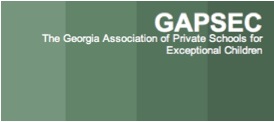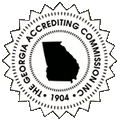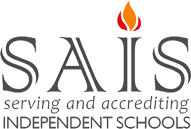ADHD
Attention deficit hyperactivity disorder (ADHD) is the most common psychiatric disorders in children, and one of the most common problems in adults, affecting between 5-10% of the population.
ADHD is characterized by persistent short attention span, distractibility, disorganization, procrastination and problems with forethought, judgment and impulse control.
Having “untreated” ADHD affects nearly every aspect of a person’s life and has been associated with school underachievement, family conflict, drug abuse, legal difficulties and poor work performance. ADHD is involved with low self-esteem, chronic stress, failure and even suicide.
The standard treatment for ADHD in both children and adults is stimulant medications, such as Ritalin or Adderall. These medications are helpful for many people, but they also make many others with typical ADHD worse. Sometimes negative reactions to these medications can be extreme, such as hallucinations, violent outbursts, volatile temperaments, psychosis and suicidal behavior.
6 Types
Here are the 6 different types of ADHD, each with different brain function issues and treatment protocols.
Type 1: Classic ADD
Symptoms: primary ADD symptoms plus hyperactivity, restlessness, and impulsivity.
SPECT: usually low activity in prefrontal cortex during an activity requiring concentration
Supplements: multiple vitamin, NeuroEPA fish oil, L-tyrosine or DL-phenylalanine
Medications: stimulant medications (such as Adderall, Concerta, Ritalin, or Dexedrine)
Type 2: Inattentive ADD
Symptoms: primary ADD symptoms plus low energy and motivation, spacey, and internally preoccupied. Type 2 is diagnosed later in life, if at all. It is more common in girls. These are quiet kids and adults, often labeled lazy, unmotivated, and not that smart.
SPECT: usually low activity in prefrontal cortex during activities requiring concentration and low cerebellar activity
Supplements: multiple vitamin, NeuroEPA fish oil, L-tyrosine or DL-phenylalanine
Medications: stimulant medications (such as Adderall, Concerta, Ritalin, or Dexedrine)
Type 3: Overfocused ADD
Symptoms: primary ADD symptoms plus cognitive inflexibility, trouble shifting attention, stuck on negative thoughts or behaviors, worrying, holding grudges, argumentative, oppositional, and a need for sameness. Often seen in families with addiction problems or obsessive-compulsive tendencies.
SPECT: usually high anterior cingulate activity plus low prefrontal cortex activity during activities that require concentration
Supplements: multiple vitamin, NeurOmega fish oil, 5HTP, L-tryptophan or St. John’s Wort plus L-tyrosine
Medications: antidepressant Effexor, or a combination of an SSRI, like Prozac, and a stimulant
Type 4: Temporal Lobe ADD
Symptoms: primary ADD symptoms plus a short fuse, misinterprets comments, periods of anxiety, headaches or abdominal pain, history of head injury, family history of rages, dark thoughts, memory problems, and struggles with reading. Often seen in families with learning or temper problems.
SPECT: usually low temporal lobe activity plus low prefrontal cortex activity during activities that require concentration
Supplements: multiple vitamin, NeurOmega fish oil, GABA or taurine for irritability, or Brain Vitale or NeuroMemory for memory issues.
Medications: Stimulants, by themselves, usually make people with this type more irritable. Effectively treated with a combination of antiseizure medications (such as Neurontin) and stimulants.
Type 5: Limbic ADD
Symptoms: primary ADD symptoms plus chronic mild sadness, negativity, low energy, low self-esteem, irritability, social isolation, and poor appetite and sleep patterns. Stimulants, by themselves, usually cause problems with rebound or cause depressive symptoms.
SPECT: usually high deep limbic activity plus low prefrontal cortex at rest and during activities that require concentration
Supplements: multiple vitamin, NeurOmega fish oil, SAMe or DL-phenylalanine
Medications: Stimulating antidepressants, such as Wellbutrin.
Type 6: Ring of Fire ADD
Symptoms: primary ADD symptoms plus extreme moodiness, anger outbursts, oppositional, inflexibility, fast thoughts, excessive talking, and very sensitive to sounds and lights. I named it Ring of Fire after the intense ring of overactivity that I saw in the brains of affected people. This type is usually made much worse by stimulants.
SPECT: marked overall increased activity across the cortex, may or may not have low prefrontal cortex activity
Supplements: multiple vitamin, NeurOmega fish oil, NeuroLink (contains 5HTP, GABA and L-tyrosine)
Medications: Anticonvulsants (such as Neurontin) and SSRI medication, or the use of the novel antipsychotic medications such as Risperdal or Zyprexa.
Common Treatments for All Types
1. Take a 100% multiple vitamin everyday. Studies have reported that they help people with learning and help prevent chronic illness. NeuroVite was formulated specifically for our own patients.
2. Adults, take 2,000 – 4,000mg of high quality fish oil a day (1,000 – 2,000mg for children). For types 1 and 2 NeuroEPA from the Amen Clinics is a high quality brand. For types 3-6 NeurOmega is best.
3. Eliminate caffeine from your diet. It interferes with sleep and helping the other treatments work.
4. Intense aerobic exercise daily for 30-45 minutes. For kids, if you cannot find a safe exercise (no brain injuries please), take them on long, fast walks.
5. Turn off the television and video games, or limit them to no more than 30 minutes a day. This may be hard for kids and teens, but it can make a huge difference.
6. Food is a drug. Most people with ADD do best with a higher protein, lower simple carbohydrate diet. Barry Sears book, The Zone is a good place to start.
7. In dealing with kids, employees, even spouses ““ NO YELLING! Many people with ADD are conflict or excitement seeking, as a means of stimulation. They can be masters at making other people mad or angry. Do not lose your tempers with them. If they get you to explode their unconscious, low energy prefrontal cortex lights up and likes it. Never let your anger be their medication. They can get addicted to it.
8. Test ADD kids and adults for learning disabilities. They occur in up to 60% of people with ADD. The local schools are often set up to do this for school age children.
9. Apply for appropriate school or work accommodations.
10. Never give up seeking help.
At Porter Academy
Students with ADD or ADHD generally do well at Porter Academy due to our 1) multi-sensory learning activities that better engage any child, 2) our small groups and individualized attention, 3) our shorter rotations to accomodate shorter attention spans, and 3) our frequent movement breaks and bilateral/mid-line crossing activities. iLs and Fast ForWord, two supplemental programs offered at Porter Academy, have also demonstrated beneficial for students with ADHD.
Resources
Webpages
Amen Clinics – source of above information
Articles






